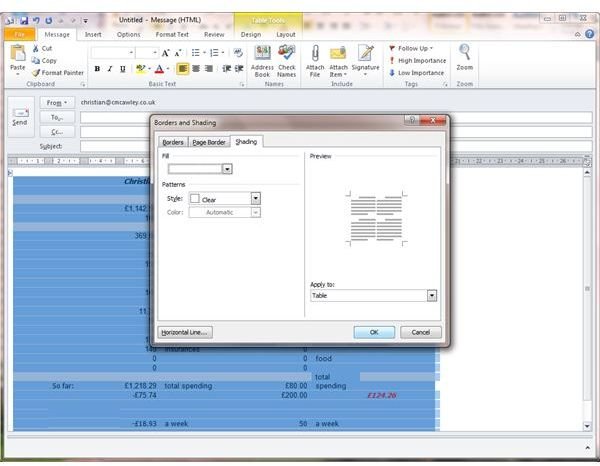What to Do If You Paste Excel into Outlook and the Background Color Changes
Paste Anything into Outlook Emails
The uses of Microsoft Outlook are plentiful, from managing calendar appointments to emailing messages and work-related attachments and more.
While attachments are the preferred method of emailing data to friends and colleagues – notably so that they will be able to open the data in their own copy of the software you used to create or manipulate it – some people prefer you to send attachments in the body of the email, which basically means copying and pasting the document into the message.
This is pretty easy for Word documents, but what about Excel? Pasting sections of an Excel spreadsheet can lead to various problems: for instance, what do you do when you paste Excel into an Outlook message and the background color changes?
What Should Happen When You Paste Excel into Outlook
Clearly if you have pasted content from Excel into Outlook and the background color has changed, then something has gone slightly awry with the pasting process.
It might be that your Excel spreadsheet had some hidden elements that you have unwittingly copied and pasted, or that your email message window in Outlook has some stationery styling applied. Either way, what should happen is that the Excel segment pasted into your Outlook email message retains the same background color as in the original spreadsheet.
Resolving this problem is pretty straightforward, although it does require a check that there is no hidden or conditional color setup in the original spreadsheet, which you can check by selecting the cell properties of the selected area (right-click > Format Cells > Fill). Note that there are various ways in which a cell in an Excel spreadsheet might be formatted.
Changing the Excel Background Color in Outlook
If your background color has changed in Outlook, it should be a pretty simple task to fix.
Find an empty cell in the segment of the spreadsheet that has been pasted in, right-click and select Borders and Shading. Here you will need to go to the Shading tab, and select an appropriate color; click OK to confirm.
Note that this method may result in any cell borders being changed to the background color, so use the Borders and Shading > Borders tab to set a correct line width and tone.
With these changes made the pasted Excel content should be pretty indistinguishable from the original.
If you’re unsure, send the email to yourself first of all to determine how it might look to the intended recipient. Once you’re happy, send it out into the wild.
Screenshot by author
Things to Consider
Although the above guidelines work in Excel and Outlook 2010 they won’t necessarily work in all versions or all combinations of versions. The best way to get this process running as simply and clearly as possible is to start out with two blank backgrounds in Excel and Outlook. Using this method should result in the same colors being used in both applications.
If this isn’t possible, and you’re still having difficulty with background colors changing between applications, you might prefer to try a screen grab.
References
Author’s own experience.
